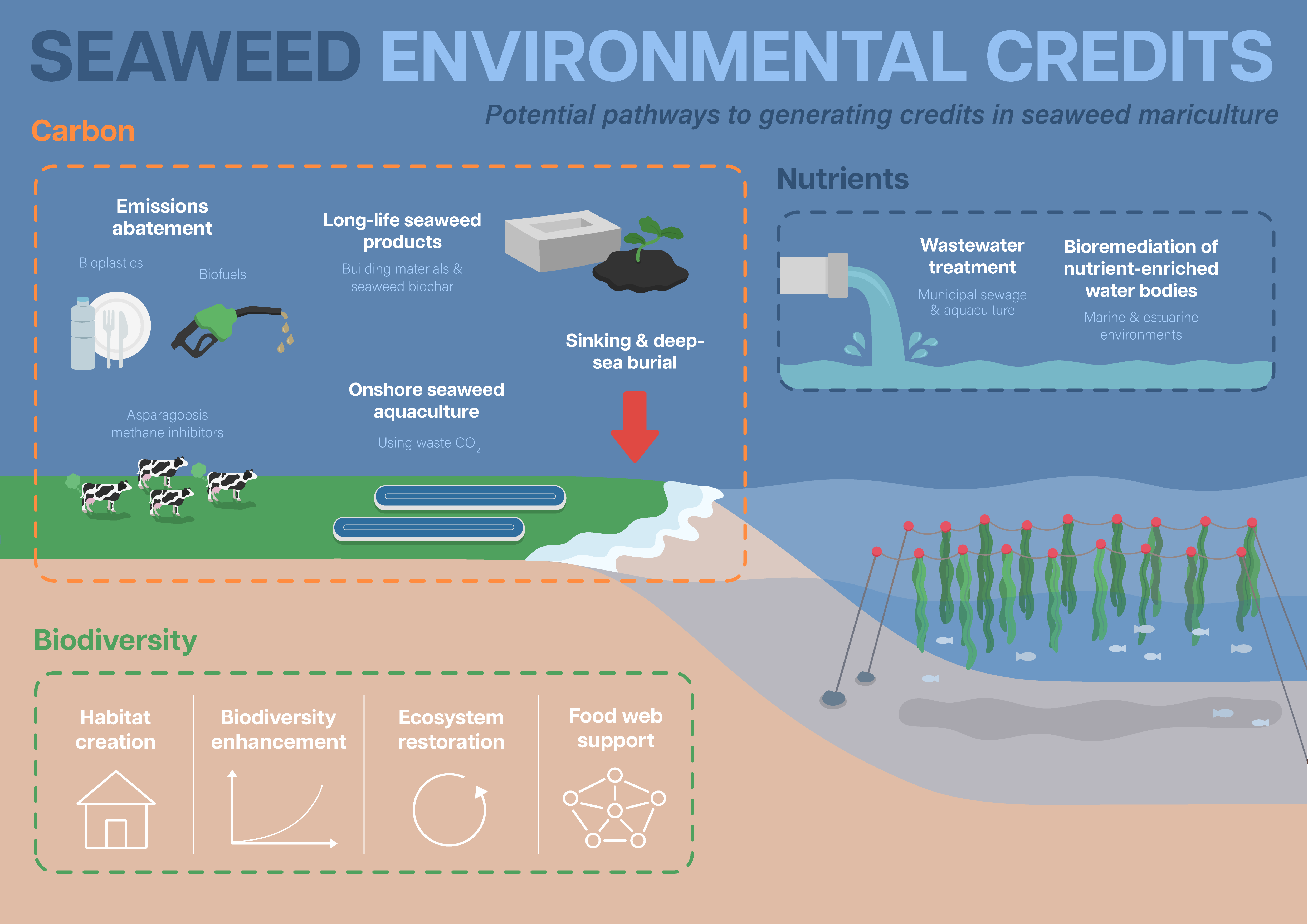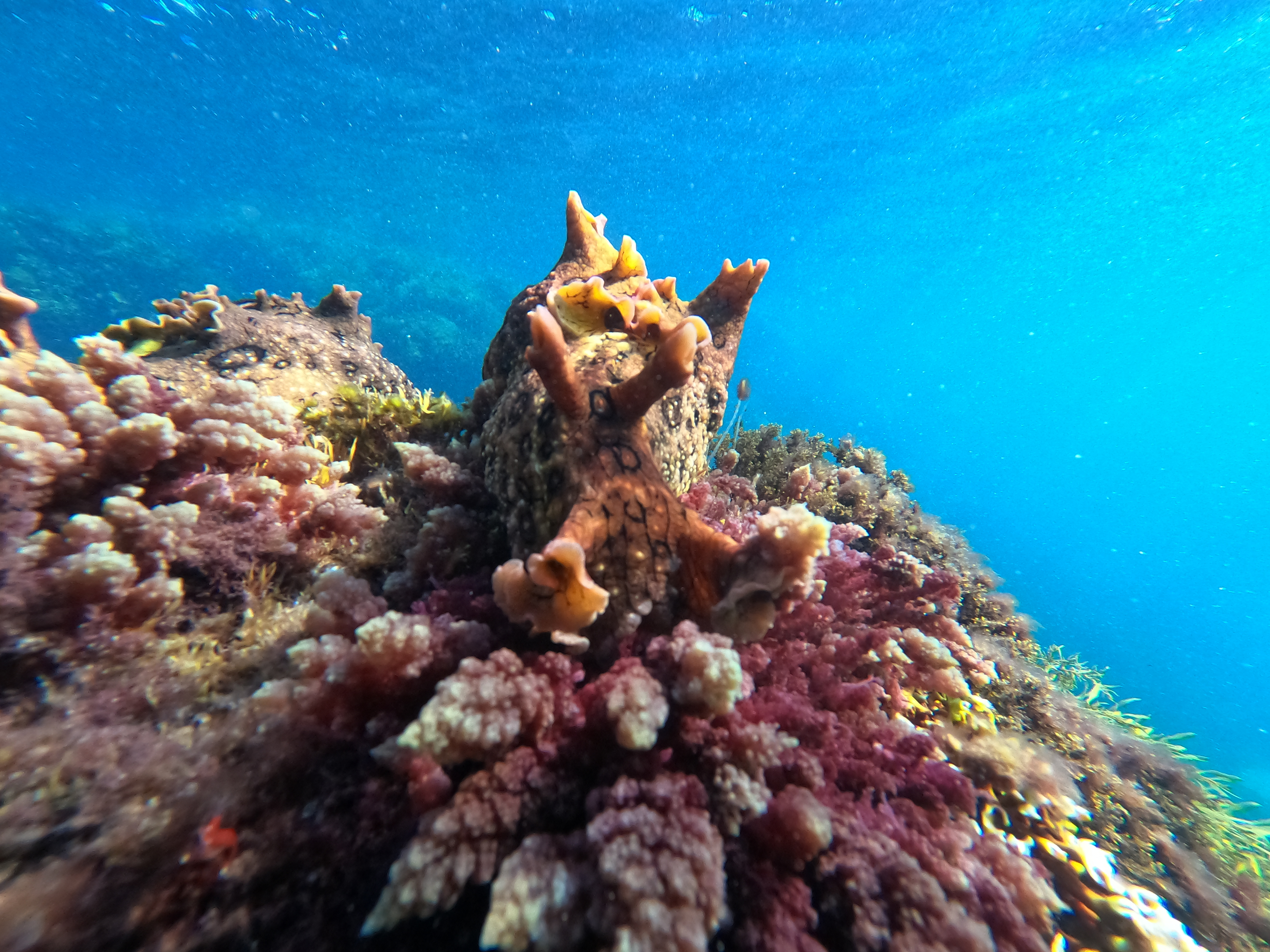Carbon, nutrient and biodiversity credits are transforming seaweed farming into a powerful commercial opportunity, unlocking new pathways for sustainability and economic growth in Australia.
By Catherine Norwood
In the depths of Australia's pristine waters, a quiet revolution is unfolding. At the heart of this revolution is Asparagopsis – a humble yet extraordinary seaweed already renowned by many for its ability to reduce methane emissions in cattle.
What if this natural powerhouse could do even more? What if it could pave the way for an entirely new green economy, one that blends environmental sustainability with commercial growth?
A new, groundbreaking report by Blueshift Consulting, The Bigger Blue Potential for Asparagopsis, shows farming Asparagopsis and other seaweeds could provide other benefits and economic returns from trading in environmental credit markets.
This research was funded as part of the Australian Government’s $8.1 million investment in Asparagopsis research coordinated by FRDC and the Australian Sustainable Seaweed Alliance (ASSA).

Olivia Smailes from Blueshift Consulting led the environmental credit research, guided by the company’s director Rob Bell as principal investigator. Their report explores several pathways through which credits may be generated.
“One of the highlights of this project is identifying the significant positive environmental benefits that seaweeds provide. These benefits can be used to raise the profile of the sector and support its development,” says Olivia.
Carbon credits
The oceans are a natural powerhouse for carbon sequestration, but as Olivia states, it’s still a bit of a mystery in scientific circles how to precisely measure the scale of this process.
Despite this, several mechanisms have been proposed for generating carbon credits using seaweed.
One exciting approach generates carbon credits through abatement of emissions from cattle herds which are fed quantities of ocean-grown seaweed biomass, that lowers the volumes of methane burped by the cattle herds.
Seaweed can also be used as a sustainable ingredient in other greenhouse gas intensive products, such as plastics.

Another pathway converts seaweed to biochar which can be added to soil, “locking up” the converted product as soil carbon, and satisfying long-term sequestration key requirement for carbon crediting.
Nutrient credits
In the nutrient credit arena, seaweeds are a shining star. Seaweed are able to take up large amounts of nutrients such as nitrogen and phosphorus – two nutrients that can unleash havoc on waterways if excessive amounts are released into waterways. This makes seaweed an ideal candidate for bioremediation, a process of cleaning up nutrient-enriched coastal waters. Seaweed farms can directly absorb these harmful nutrients, and through systems like PacificBio’s bioremediation efforts and the Reef Credits Scheme, they can even generate nutrient credits.
Blueshift has identified a significant opportunity to expand Australia’s environmental markets by creating a national water quality trading framework, which includes seaweed farming as a key nutrient mitigation strategy.
Biodiversity credits
Australia’s biodiversity credit market is also still in development, with the launch of a national trading scheme planned for this year.
Biodiversity benefits from seaweed farming include habitat creation, increased species richness and ecosystem restoration. Olivia notes that, while research supports these benefits, difficulties in measurement may make it difficult to quantify benefits for biodiversity credits.
Challenges
The report notes the current small-scale of Australia’s seaweed sector as one challenge in developing environmental credits. Expanding seaweed farming is likely to be co-dependent on developing environmental markets.
Other challenges include the complexity of the seaweed carbon cycle, the need for robust measurement, reporting and verification systems, and the development of a standardised biodiversity metric.
Principal investigator Rob Bell says if ASSA can continue to advocate for seaweed farming and have seaweed-related environmental credits recognised, there could be considerable opportunities to create a substantial Australian seaweed industry that will also drive considerable benefits for the environment.
“Active commodity trading markets provide the key link to achieving these dual outcomes,” says Rob.
Josh Fielding, FRDC Senior Program Manager, says the report from Blueshift Consulting will contribute to the wide range of industry seaweed research and development activities underway.
“The Australian seaweed sector is going from strength to strength. With a range of similar critical projects like this approaching finalisation, it will be interesting to see how the industry develops to contribute to the economic, environmental and food security contribution to our nation in the decades to come,” says Josh.
Related FRDC Project
2023-190: The bigger blue potential for Asparagopsis: A review of the potential for blue carbon, nitrogen, phosphorus and biodiversity credits for the Australian Asparagopsis seaweed industry





